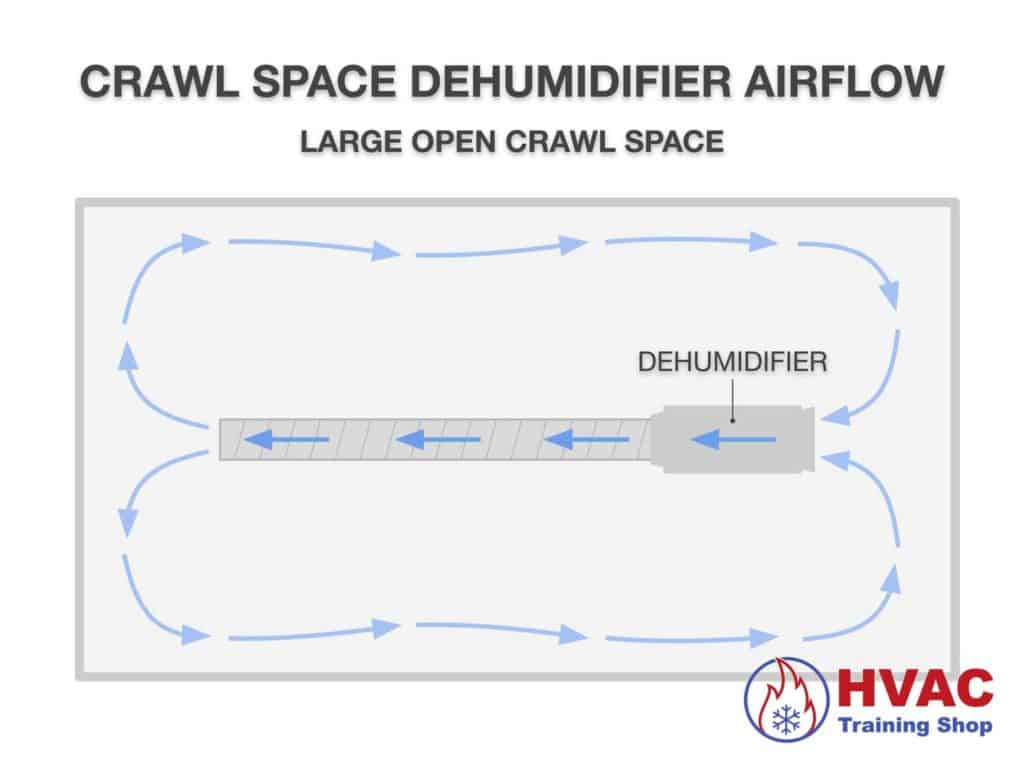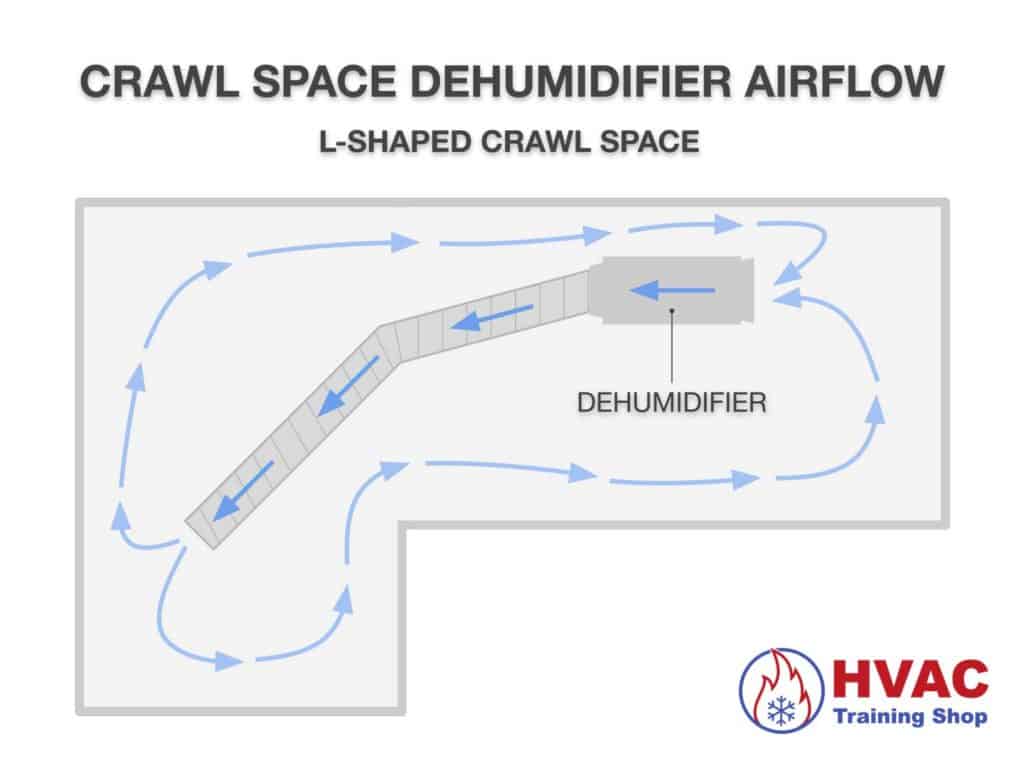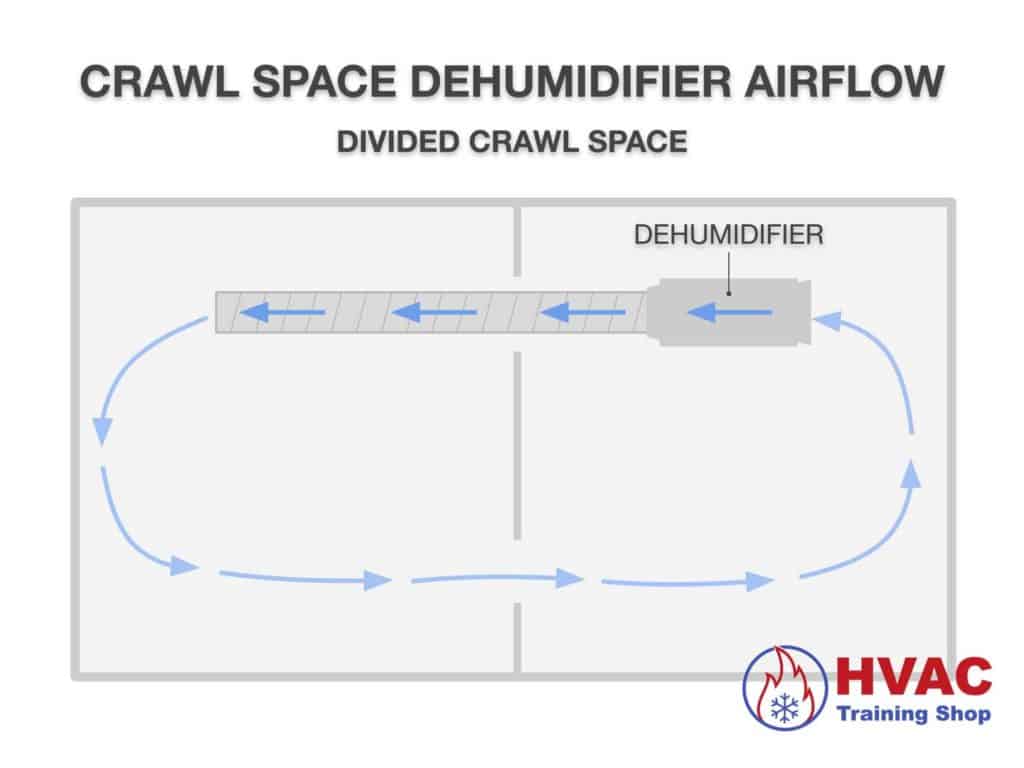High humidity in a crawl space can lead to a whole slew of issues – mold, mildew, and wood rot, among others.
So it makes sense that the first thing that most people do is put their regular upright dehumidifier in their crawl space.
However, the dehumidifier that you use in your living room or basement is simply not cut out for use in your crawl space.
You can not use a regular dehumidifier in a crawl space because they are not designed to continuously dehumidify large spaces.
In this article, I’ll go over everything that you need to know about crawl space dehumidifiers – and what makes them different from regular dehumidifiers.
Regular versus crawl space dehumidifier
If you’re thinking of using your regular dehumidifier in the crawl space under your home, it’s not the best option.
Regular dehumidifiers are simply not made to withstand the conditions of crawl spaces.
Also, purpose-made crawl space dehumidifiers have features on them that make them ideal for installation underneath your home.
Here is a list of reasons why a crawl space dehumidifier is better than a regular dehumidifier for dehumidifying your crawl space:
- Crawl space dehumidifiers are more compact, and will fit more easily into the crawl space under your home.
- You can attach ductwork to crawl space dehumidifiers to better circulate airflow in a crawl space.
- Crawl space dehumidifiers are made to be installed in tight areas, and most of them have hanging kits so you can suspend them from the floor joists in your crawl space.
- Crawl space dehumidifiers blow air horizontally, providing more airflow coverage in a wide area. Regular dehumidifiers blow air vertically, so their airflow will be impeded by the low height of the crawl space.
- Crawl space dehumidifiers have remote controls, so you can monitor the status of the dehumidifier and adjust its settings from inside your home.
- All crawl space dehumidifiers drain externally, so you won’t ever need to go down into your crawl space to empty it (more on this below).
Where should you place a dehumidifier in a crawl space?
The placement of a dehumidifier in a crawl space is critical to how well it will perform.
There are two main considerations when choosing a place for a dehumidifier in a crawl space:
- Airflow
- Drainage
I’ll go over them below.
Crawl space dehumidifier airflow
The first thing to take into account when selecting a place for your dehumidifier is airflow. You need to make sure that the airflow of the dehumidifier won’t be blocked. This means that you need to keep your dehumidifier away from tight spaces such as corners.
You should try to separate the supply and return air vents of the dehumidifier as much as you can.
If possible, place your dehumidifier on one side of your crawl space. Then run ductwork for your dehumidifier’s supply air to the other side of your crawl space.
Separating the supply and return vents creates a stream of airflow that encompasses the entire area of your crawl space. Having airflow cover your entire crawl space helps to ensure that you won’t have any stagnant humid areas.
Dehumidifier location in a large open crawl space
If your crawl space is large and open without many barriers, then you’ll want to ensure that you get proper airflow circulation.
Separating the supply and return ducts should be your first priority to ensure adequate airflow coverage.

Dehumidifier location in an L-shaped crawl space
If your crawl space is L-shaped, then you will need to direct airflow into the corner. This ensures that stagnant, humid air won’t get trapped in the corner while the rest of the space gets dehumidified.

Dehumidifier location in a divided crawl space
If your crawl space is divided or has a barrier, then you’ll need to direct airflow from one side of the barrier to the other. This ensures that airflow is circulated to and from both sides of the barrier.
If you go this route, be sure that the air has a return path back to the dehumidifier, as shown below.

How to drain a dehumidifier in a crawl space
Crawl space dehumidifiers have a drain port on them where you connect a drain hose or pipe. The drain pipe on a crawl space dehumidifier drains the water outside your home.
There are two drain methods that a crawl space dehumidifier uses to drain water out of your home:
- Gravity drain
- Condensate pump
1. Gravity Drain
The gravity drain method is the simplest way of draining water from a crawl space dehumidifier.
The gravity drain requires the crawl space dehumidifier to be mounted at a higher elevation than the end of the drain pipe outside of your home.
There must be ¼” of elevation drop per 1 foot of drain pipe in order for your crawl space dehumidifier to gravity drain properly.

If your crawl space dehumidifier is not mounted high enough, or if your crawl space is at a lower elevation than the ground outside your home, then you will need to use a condensate pump.
2. Condensate pump
A condensate pump is required if your crawl space is below grade, or if your drain pipe doesn’t have enough slope to use the gravity drain method.
The condensate outlet of your dehumidifier is piped to the inlet of the condensate pump.
When the reservoir in the condensate pump fills up with water from the dehumidifier, the condensate pump turns on and pumps the water outside your home.
Crawl space dehumidifier drain pan
Whether you use the gravity drain method or a condensate pump, you should always install a drain pan underneath your crawl space dehumidifier.
The purpose of the drain pan is to catch water if your crawl space dehumidifier starts leaking.
Another reason for the drain pan is if the condensate pump stops working – you’ll want the drain pan to catch the water instead of the water spilling all over your crawl space.
In the drain pan, you will also need to install a float switch. The purpose of the float switch is to tell your dehumidifier to turn off if a condensate leak occurs. The last thing that you want is your dehumidifier to keep chugging along when it’s leaking water all over your floor.



